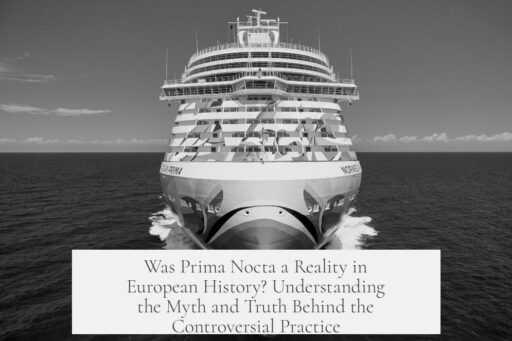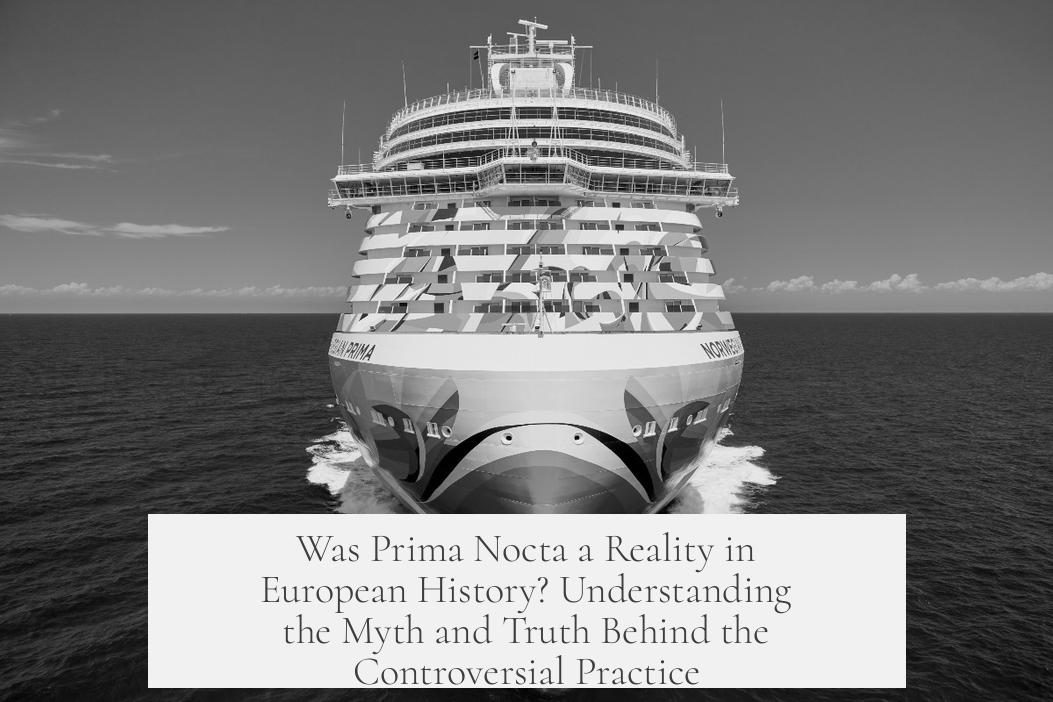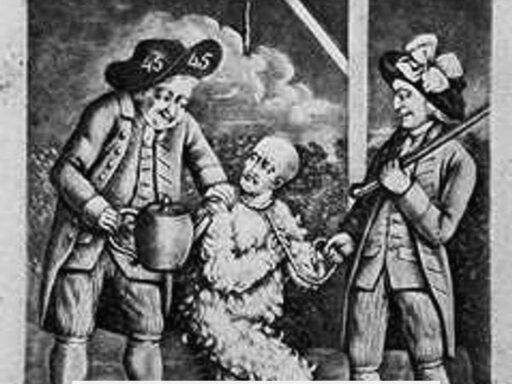Prima Nocta, often depicted as a feudal lord’s legal right to sleep with a subordinate’s bride on her wedding night, did not exist as an actual custom or law in European history. Historical evidence shows that claims of its practice are largely fictional and stem from later literary, political, and polemical sources rather than medieval records. Scholars agree that primae noctis was never an established feudal right.
The myth did not emerge from contemporary medieval society but was rather constructed after the Middle Ages. 19th-century French historians played a significant role in creating and solidifying this idea. They aimed to cast the medieval period in a negative light as part of broader political agendas. By giving the notion a Latin name, primae noctis or jus primae noctis, these historians made it seem like a genuine medieval concept despite its lack of authentic roots.
In medieval France, this supposed right was often referred to as droit de cuissage, meaning “right of thigh,” or droit de seigneur (“right of the lord”) in Anglo historiography. These terms sometimes appeared in polemical or literary sources from the 13th century onward. The references typically arose in contexts criticizing perceived immoral behavior of the nobility or calling for reform of “barbaric” sexual customs. However, these mentions are usually based on exaggerated complaints and are not straightforward historical evidence.
An example often cited is the 16th-century Scottish historian Hector Boece’s account accusing an 11th-century “King Erwin” of claiming the virginity of commoners’ wives. This narrative served nationalistic and Christian triumphalist aims rather than recording real practices. Notably, King Erwin himself is a fictional figure, illustrating how primae noctis is part myth and part propaganda.
Moreover, if such a harsh and socially disruptive norm existed, historians would expect to find it referenced in songs, poetry, legal documents, or other medieval sources describing noble privileges and society’s structure. Yet, such evidence is conspicuously absent. The supposed right does not appear in credible medieval legal codices or accounts focused on feudal rights and obligations.
By the 17th century, primae noctis had become entrenched in popular imaginations as a symbol of feudal barbarism. Writers used it in diverse non-medieval contexts to critique despotic power. The idea became widely accepted without critical examination. Only in the 19th century did serious academics challenge it, although their debates often reflected their political stances—either condemning remnants of the ancien régime or idealizing medieval society.
Primae noctis also influenced culture. The question arises whether figures like Beaumarchais or Mozart included references to it in works like The Marriage of Figaro because they believed it was genuine or to align with radical political sentiments of their times. Either way, this shows how the myth permeated European cultural consciousness by the late 18th century.
| Aspect | Explanation |
|---|---|
| Origin | Created post-Middle Ages, popularized by 19th-century historians |
| Medieval Evidence | Scant and mostly polemical or literary; no legal basis |
| Terminology | Referred to as droit de cuissage or droit de seigneur; Latinized retrospectively |
| Polemical Use | Used to criticize sexual mores or “barbaric” behavior |
| Cultural Impact | Referenced in revolutionary and artistic works for symbolic reasons |
| Historical Consensus | Prima nocta is a myth, not an actual feudal custom |
The idea of primae noctis informs more about the biases of historians and cultural critics than about medieval practice itself. It reveals how myths can arise from polemics and later become accepted as history through repetition and cultural embedding.
- The medieval “right” of prima noctis did not legally or customarily exist.
- It originated as a myth constructed and popularized mainly in the 19th century.
- References in medieval times were rare, polemical, and often exaggerated complaints.
- Absence of primae noctis in legal and literary medieval records undermines its historicity.
- Cultural works like The Marriage of Figaro reflect the myth’s persistence, not reality.
Was prima nocta ever a real feudal right in medieval Europe?
No, prima nocta did not exist as an actual feudal right or custom. Medieval mentions are literary or polemical, not historical facts.
Where did the myth of prima nocta come from?
The myth arose mainly in the 19th century by French historians who wanted to depict the medieval period negatively. They gave it a Latin name, making the idea seem real.
Are there medieval sources that mention prima nocta?
Some 13th-century texts mention related concepts, but these are often polemical, criticizing sexual morals or depicting rulers as barbaric, not evidence of an accepted right.
Why do historians doubt prima nocta’s historical existence?
It is absent in expected medieval records and is mainly found in polemical or nationalist writings, which suggests it was invented or exaggerated for political or moral arguments.
How did prima nocta influence culture despite being a myth?
By the 17th century, it was part of the image of feudal society’s cruelty. It appeared in plays and literature like Mozart’s opera, reflecting ideas and politics of those times, not medieval reality.




